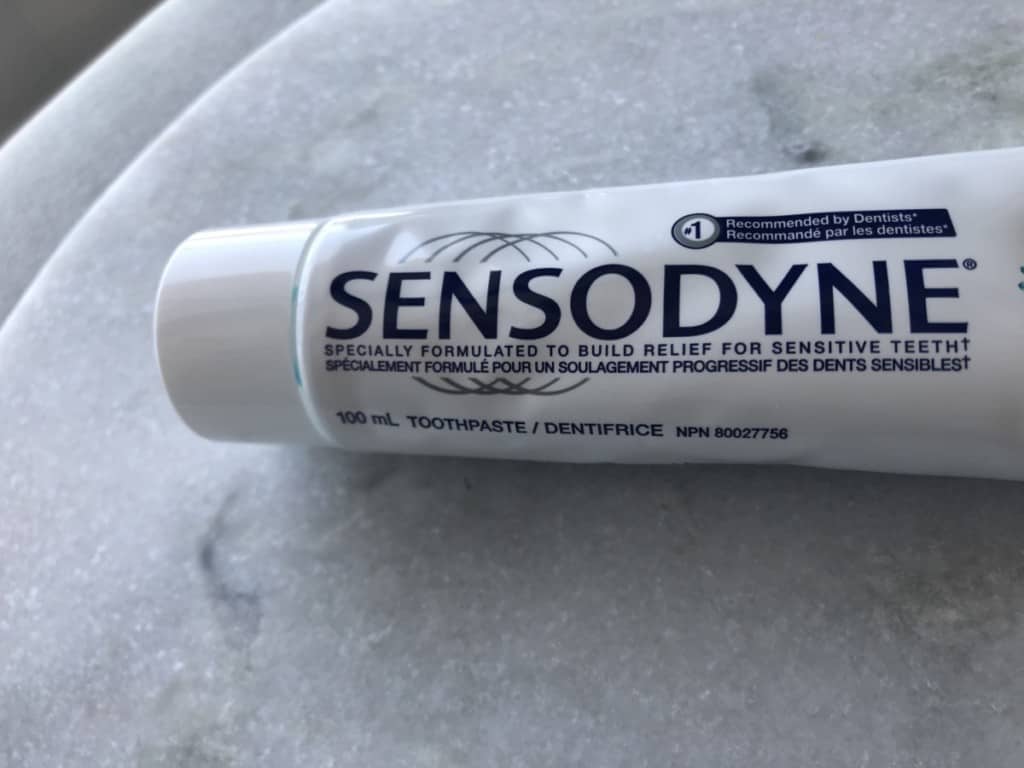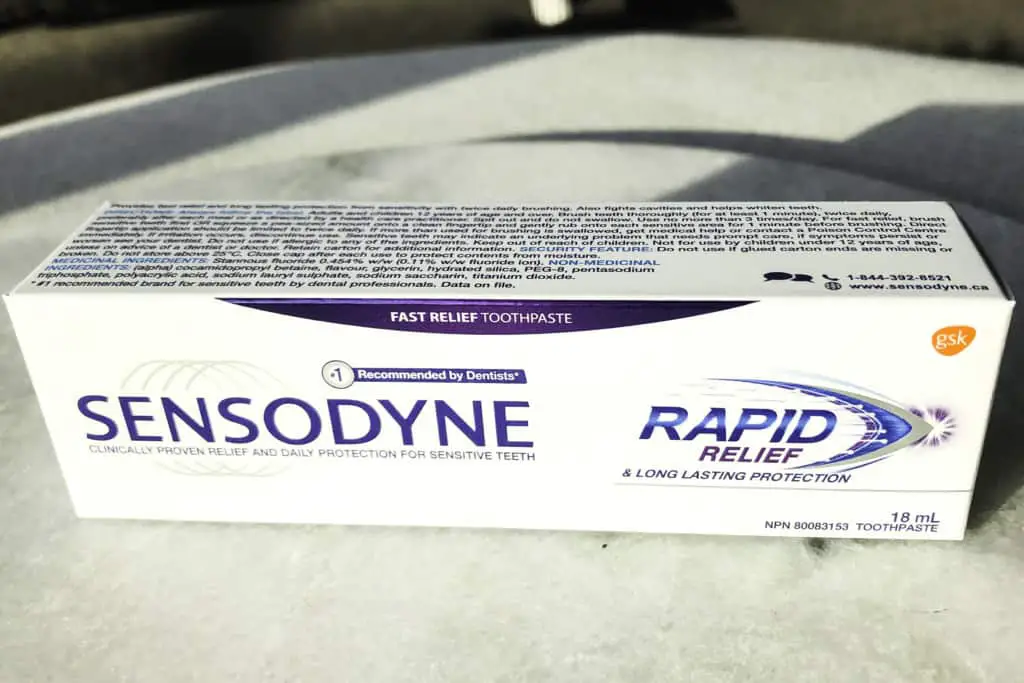
Teeth zingers most often occur in professional teeth whitening procedures. Because the teeth whitening solution is a much higher percentage in professional-grade products than over-the-counter products, teeth zingers happen more frequently. However, there is a way to prevent them and reduce the pain associated with teeth whitening.
Teeth whitening zingers can be stopped by using sensitivity toothpaste with potassium nitrate before, during and after the whitening treatment. Avoid food and drink that is too hot or cold, and use a post-treatment relief gel in your whitening trays that has a higher percentage of potassium nitrate.
Having zingers during whitening treatments can make the patient stop the treatment prematurely, reducing the amount of time that the solution stays on the teeth, which means your results will not be as good as they could have been.
It’s expensive to have in-office whitening treatments, and you want to get the most out of your money. Preventing zingers or reducing their intensity of them can allow you to get the best whitening results.

How to prevent and get rid of tooth whitening zingers
Not all tubes of sensitivity toothpaste work the same. They have different ways of working as different people have different needs.
For teeth whitening, the best way to prevent zingers and sensitivity is to use a sensitive toothpaste with potassium nitrate.
The best toothpaste to use is the Original Sensodyne (Amazon link), which is one of the cheapest ones!
(Amazon link), which is one of the cheapest ones!
You will want to use the Original Sensodyne for at least 2 weeks before your whitening treatment, and it needs to be used in the following way;
- Floss your teeth prior to brushing.
- Brush your teeth for at least 2 minutes with the Original Sensodyne. All you need is a pea-sized amount of toothpaste on your brush.
- After you are done brushing, DO NOT RINSE. Sorry to be a little pushy here, but it is important not to rinse your mouth after brushing.
Not rinsing after will leave a layer of potassium nitrate on your teeth so you will get the highest level of protection.
You can spit as much as you want, but just don’t rinse.
If you rinse your mouth out after brushing, you are essentially rinsing away all of the potassium nitrate, reducing the effectiveness and increasing your chance of zingers and pain.
Continue not rinsing after brushing for at least a few days after the whitening treatment. And even beyond this time frame, continue not to rinse your mouth after brushing at night. Doing so will allow the fluoride to strengthen the teeth and prevent tooth decay. And the potassium nitrate will prevent tooth sensitivity.
It took me a while to get used to this, but now that I am used to it, I find peace knowing that I am doing everything I can to protect my pearly whites.
But zingers don’t just come from professional whitening treatments. They can come from over-the-counter whitening products as well. But because over-the-counter teeth whitening potency isn’t as strong, the zingers may not be as intense and more manageable.
Read now: Teeth Whitening: Why It’s Worth Having Done at the Dentist
How potassium nitrate reduces teeth whitening zingers
Potassium nitrate desensitizes the nerve of the tooth by preventing the nerve of the tooth from sending the pain signal to the brain so you don’t feel pain.
It’s often a misconception that any sensitivity toothpaste will work. Sensitivity toothpastes work in different ways, with some acting like a band-aid and just covering up the area that is sensitive and not treating it.
Using the wrong sensitivity toothpaste can cause the whitening solution to get past these blocks, and the tooth’s nerve is left vulnerable.
What foods and drinks can trigger zingers after teeth whitening?
Following a strict diet after you go through teeth whitening treatment is the key to success. Not only for your results and to get the whitest smile you can but also to prevent painful sensitivity after the treatment.
Foods that are acidic, sweet, and have a cold or hot temperature, can increase tooth sensitivity and zingers.
I put together a whole post that goes over every single thing to avoid during and after whitening your teeth. You’ll be surprised at how much I go over that is not talked usually talked about… even down to the colour of your toothpaste can make a difference. You can find that post linked below.
Read now: Teeth Whitening: Foods and Drinks to Avoid During and After
How long do teeth hurt after whitening?
Most of the pain should subside after about 48 hours. If you are consuming things hot, cold, sugary, or acidic, you can experience the sensitivity for a couple of weeks after. Keep using the sensitivity toothpaste with potassium nitrate to help alleviate the sensitivity.
If your teeth are extremely sensitive in a few areas, along with brushing 2 times a day with the potassium nitrate toothpaste, there is another toothpaste that you can use in conjunction/throughout the day.

Sensodyne has a toothpaste called Rapid Relief (Amazon link) . This toothpaste is a miracle worker at reducing sensitivity fast. However, it also has pretty specific instructions for use.
. This toothpaste is a miracle worker at reducing sensitivity fast. However, it also has pretty specific instructions for use.
You want to take about a grain of rice size on your fingertip and dab/rub in the toothpaste in one area for at least 60 seconds. It may feel like the longest 60 seconds when you are in the moment, but you can set a timer to ensure the full minute is done. Repeat this for each area that has more sensitivity.
Usually, the sensitivity comes from exposed root surfaces, so try and pinpoint which tooth is experiencing the most sensitivity and focus on the root surface/along the gumline.
What is the best way to whiten teeth?
Professional teeth whitening treatment is the gold standard, be it by in-office treatment such as Zoom or Opalescence or custom moulded trays with a professional-grade gel to take home with you.
Read now: Teeth Whitening: Why It’s Worth Having Done at the Dentist
The only things that will work to whiten your teeth are products with peroxide in them. It could be either hydrogen peroxide or carbamide peroxide. And newer technology, PAP, shows very strong evidence for teeth whitening.
Stay away from whitening toothpaste as the majority are very abrasive and don’t whiten the teeth but take off the outer layer to expose more white enamel underneath. Over time, if too much enamel is taken off, the yellow dentin underneath will start to show through, making your teeth appear more yellow.
There are other popular teeth whitening products on the market, and people need to be careful of these products. It’s unfortunate that teeth whitening products are not more regulated because a lot of companies are getting away with selling products that either don’t work or can damage tissue.
One example of this is the lights that are used in many over-the-counter whitening products. Some studies prove that the lights used in teeth whitening do not affect the effectiveness of the treatment and do not make the teeth whiter.
prove that the lights used in teeth whitening do not affect the effectiveness of the treatment and do not make the teeth whiter.
A popular form of teeth whitening is through the use of whitening pens, which you can read about in the post linked below.
Read now: Hygienist Explains; Do Teeth Whitening Pens Actually Work?
Talk with your dental professional
Getting professional advice is extremely important. So many whitening products on the market can be damaging to not only your teeth but your gum tissue and your body. Some of this damage is irreversible.
If you are thinking about whitening your teeth, talking with a dental professional and having a thorough oral health exam is vital.
Things like cavities and gum disease need to be considered, and dental restorations such as crowns, fillings and veneers will not whiten.
I just don’t want to see people go and spend all this money on teeth whitening gimmicks that don’t work or if you have a dental condition that could interfere with teeth whitening.
I’ve had a few patients that have had cavities and issues with their teeth, and they have spent money on over-the-counter whitening treatments, thinking it will get rid of these areas. However, all they needed was a dentist’s dental exam and their cavity treated.
I hope you are having a great day,
Holly 🙂

